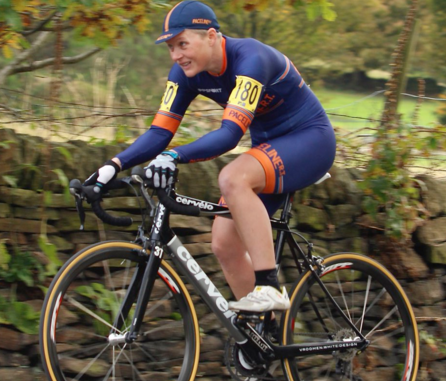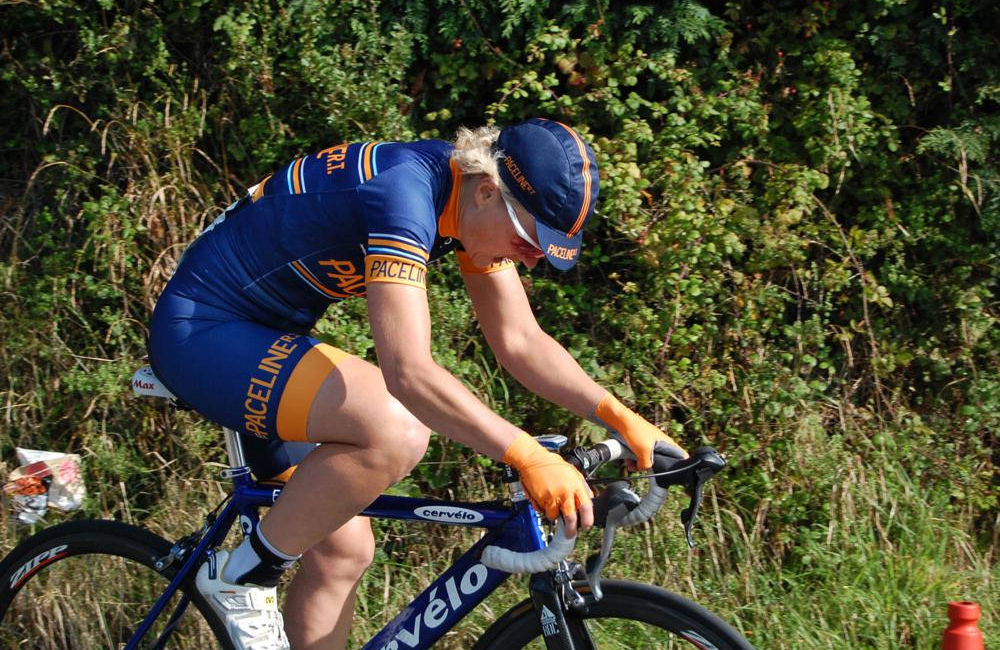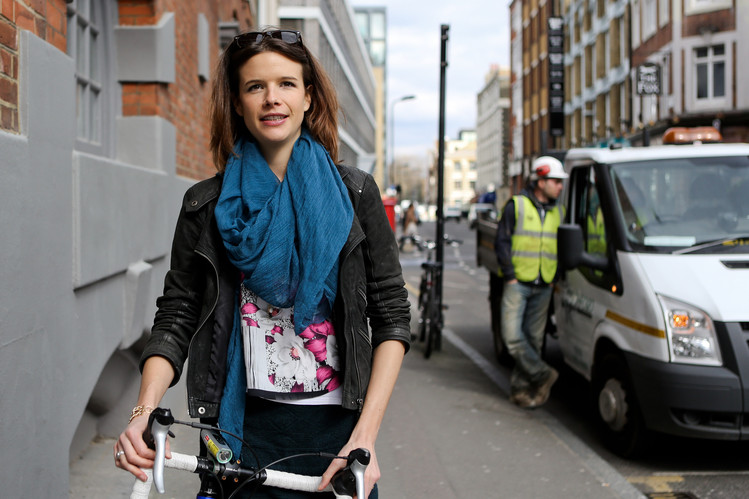“Spectators love to cheer on hill climbers and it doesn’t matter if you win or come last, you get the same amount of cheers and admiration by all these people who aren’t on their bikes riding up a hill.”
Of course, these things do change slowly – and more women taking part is certainly a good start. We asked Sennema what advice she’d give to those nervous about giving it a go: “It’s one of those experiences that if you do one, you’ll either be hooked or never do another. There’s only one way to find out.. I’d say that it’s important to remember that TTs aren’t like road races. Everyone has their own individual race.
“Spectators love to cheer on hill climbers and it doesn’t matter if you win or come last, you get the same amount of cheers and admiration by all these people who aren’t on their bikes riding up a hill. The results only matter to the people getting them… after the race, nobody really cares much about your result but you!
“Nervousness about falling off, looking foolish, or coming to a standstill are best handled by lots of specific preparation. Pre-ride the hill if you can, have a good look at it on Google streetview if you can’t, and get to know the landmarks. Know where the start and finish line are. Calculate how long it should take you to do the climb and train for that duration, or at least do some efforts in that time range so you know what a 3 or 5 or 8 minute max effort should feel like at halfway or at the end.
“And get your gears right! Having an extra gear is much better than not having enough gears. Use something like Strava to see how other people fare on the course and read up on the hill. All the famous hill courses will have lots of info available, whether that’s cycling blogs or race reports or books like the 100 Climbs series. Knowledge brings confidence.”

Of course, there’s taking part, and there’s aiming to be competitive. Sennema tells us what you need to be a top hill climber: “[The short duration means] you need to be able to push yourself – but pace yourself like a TTer does. And attack the road tactically like a roadie does. And kill yourself in training because hill climb intervals are some of the hardest workouts you can do.”
She added: “Being a bit of a cycling geek doesn’t hurt, being keen on finding marginal gains, analysing climbs and finding where time can be won and lost. All that adds up to a good hill climber. It helps to be either quite lightweight or have a high power-to-weight ratio too of course!”
Now with three titles to her name, Sennema is eyeing up next year’s course. She said: “Initially I thought I might not [try to defend the title], three is enough and it’s a long season when you start in February at sporting TTs and go til the end of October with hill climbs. But having looked at [next year’s] Bank Road course in a bit more detail, I’m sorely tempted now to go for a fourth title in 2016. Mostly because I don’t think I’ll be the favourite – it’s a short steep course favouring younger more explosive riders than I am – but I do think I could win it if I do everything right. We’ll see how I feel about it next summer.”
The full results are here, but below are the women’s results:
1 Maryka Sennema (Paceline RT) 5’31.9″
2 Hayley Simmonds (Velosport) 5’34.2″
3 Lou Bates (Carnac Planet X) 5’34.9″
4 Becky Lewis (Fibrax-Wrexham RC) 5’36.1″
5 Lynn Hamel (Lusso72Design.com) 5’36.3″
6 Elizabeth Stedman (Fusion RT Gear Club) 5’39.5″
7 Mary Wilkinson (Yorkshire RC) 5’44”
8 Fiona Blackett (Bishop Auckland CC) 5’47”
9 Alice Lethbridge (GBCycles.co.uk) 5’53”
10 Helen Roby (HD Revolutions) 6’03”
11 Gabriella Leveridge (Velosure-Starley Primal) 6’07.2″
12 Victoria Grimmer (Paramount CRT) 6’12.4″
13 Henrietta Colborne (Jadan) 6’14.2″ – junior
14 Nicola Soden (Stocksbridge CC) 6’16.8″
15 Emilie Verroken (Langsett Cycles) 6’19.2″
16 Tamara Davenne (Zappi’s) 6’22.4″
17 Claire Munton (Malteni) 6’23.1″
18 Heidi Viles (Somerset RC/The Bicycle Chain) 6’29.0
19 Josephine Gilbert (Velosure-Starley Primal) 6’30.4″
20 Heather Despres (Guernsey VC) 6’34.6″ – junior
21 Julia Van Campen (Sheffrec CC) 6’34.8″
22 Julianna Rourke (Edinburgh RC-SCU) 6’35.7″
23 Melissa Brand (Solihull CC) 6’38.3″
24 Natasha Cutmore (RST Sport/Aero-Coach) 6’46.7″
25 Nikola Matthews (Pearl Izumi-Sports Tours International) 6’48.3″
26 Jessica Roberts (Team Elite/Paul Bethall Electrical) 6’49.9″
27 Jessica Rhodes-Jones (Beacon Roads CC) 6’51.9″
28 Louise Scupham (Scarborough Paragon) 6’52.3″ – junior
29 Wiebke Rietz (1st Chard Wheelers) 6’54.7″
30 Nixie Turner (Worcester St Johns CC) 6’58.8″ – junior
31 Jayne Dickens (Vision Racing-Delamare Dairy/GRM) 7’00.3″
32 Nicola Holloway (Sheffrec CC) 7’00.8″
33 Iona Sewell (Carnac-Planet X) 7’07.4″
34 Sandra Mackay (Veloschils Interbike) 7’15.8″
35 Isla Aimee Rush (Wyndymilla) 7’17.4″ – junior
36 Crystal Spearman (Nopinz.com) 7’26.8″
37 Ruth Gamwell (Macclesfield Wheelers) 7’29.3″
38 Jasmine Gray (Champion System/VCUK) 7’40.7″ – junior
39 Hannah Bayes (Scarborough Paragon) 7’44.7″ – junior
40 Eve Lyon (Nutcracker Racing) 8’12.1″ – junior










